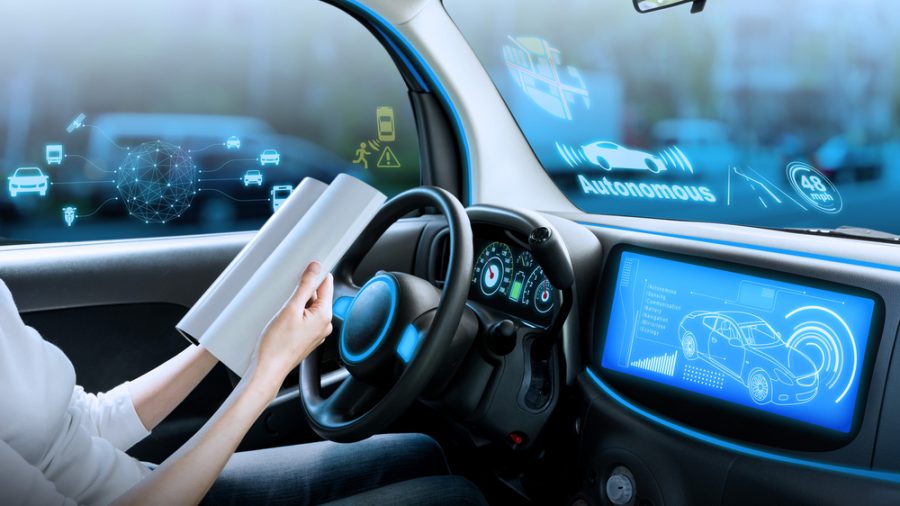Since 1 March 2023, all light vehicle models newly introduced to Australia must be fitted with autonomous emergency braking (AEB). It’s one of many driver assistance technologies designed to save lives and reduce injuries on the road. Even so, is vehicle tech the best way to reduce death and injury on the roads?
Autonomous emergency braking (AEB)
AEB technology uses radar to automatically brake if the driver gets too close to the car in front. The new Australian Design Rule mandates AEB for all passenger cars, SUVs and light commercials below 3.5 tonnes, and includes pedestrian detection. It applies in 2 phases:
- Since 1 March 2023, all light vehicle models newly introduced to Australia
- From 1 March 2025, all new vehicles including existing models.
The Federal Government claims using AEB will save around 20 lives and prevent 600 serious injuries every year.
In the US, AEB is also standard on most passenger vehicles sold there. The Insurance Institute for Highway Safety (IIHS) has found these systems are highly effective and have reduced pedestrian crashes by 27%. However, AEB works much better during the day than at night:
- 84% of AEB achieves good ratings in the daytime.
- 47% of AEB do so during the night.
Most pedestrian crashes happen during the day, as might be expected, but 75% of pedestrian deaths happen in dark or dim conditions.
It will be interesting to see if the AEB mandate reduces pedestrian crashes as successfully as in the US.
Lane keeping (LK) technology
The Victorian Government asked Monash University to investigate the potential for Lane Keeping technology (LK) to reduce fatal crashes and injuries.
In Australia, unintended lane departures at high speeds account for 42% of fatal crashes and 55% of all deaths. This means successful use of LK could potentially reduce road trauma considerably. According to the Monash study using crash data from Qld, NSW, Vic, SA and WA in 2013-19, LK could reduce the chances of a casualty crash by 16%, especially in high speed zones. It could reduce deaths or serious injuries in a crash by 22%.
These are encouraging results, based on modelling. However, the modelling may not take into account that drivers don’t always use vehicle tech as intended.
The IIHS observed US drivers using systems for acceleration/braking and steering/lane keeping. In fact, drivers were driving faster, looking away from the road more often and for longer periods, and doing more distracting things. While it’s convenient not to pay full attention to driving, these technologies had lulled drivers into a false sense of security.
The ability of vehicle tech to make driving easier may interfere with its ability to make driving safer.
The promise of technology
ANCAP Safety (Australasian New Car Assessment Program) has published safety ratings on vehicles since 1992. It assesses vehicle technologies, such as AEB, LK, automatic emergency steering (AES) and speed assistance systems (SAS) from the point of view of the driver, passengers and vulnerable road users.
IIHS began rating vehicles in the US during the early 1990s. In 2016, it began including crash prevention technologies as part of its ratings program. IIHS rates the same technologies as ANCAP but goes one step further and rates the quality of headlights. Headlights are an old but updated technology that is still vital for driving safely at night, at dusk and dawn, or in poor weather.
There is no doubt vehicle tech can be used to help drivers do the driving. At the same time, drivers need to focus on the driving they are being helped to do.
As the IIHS says, “we do not believe in the promise of technology to completely replace drivers and for the vehicle to assume all responsibility”. It could be counterproductive to work on replacing the driver, which as carmakers have already found is expensive and nearly impossible.
Technology alone can’t prevent all fatalities on our roads, not because it’s not useful, but because of our reliance on it. Using deceptive naming, such as Autopilot or Full Self Driving , will only contribute to misunderstanding and complacency.
We have to look at the whole picture, whether it’s the Safe Systems approach, or promoting ideas to change driving behaviour. Vehicle tech has a vital role to play in reducing deaths and injuries, but it is not everything.


your opinion matters: